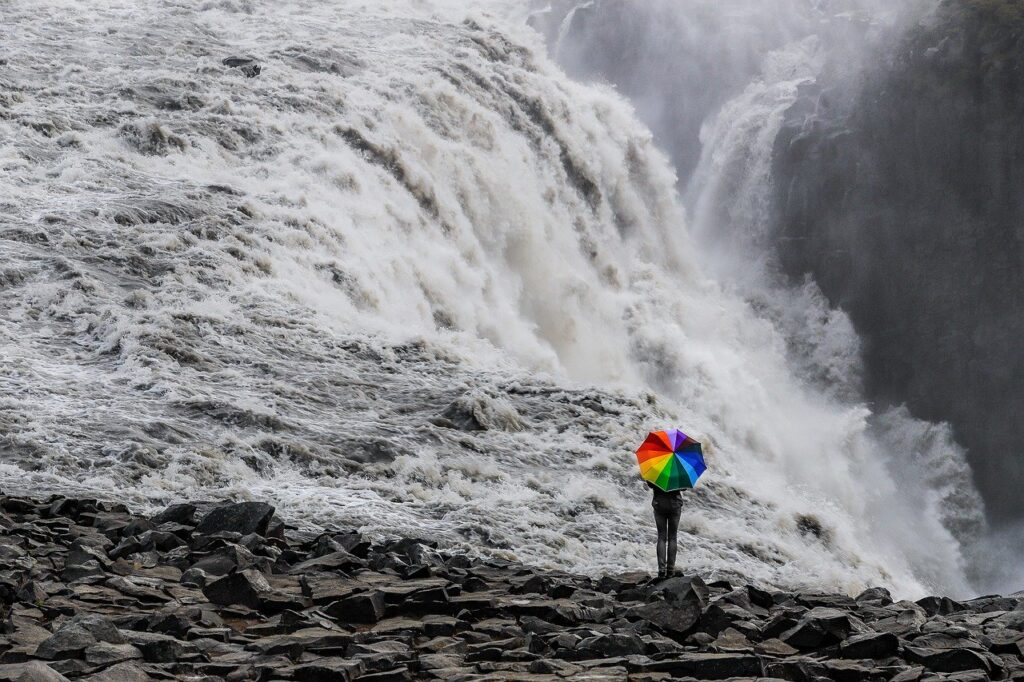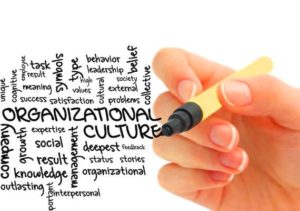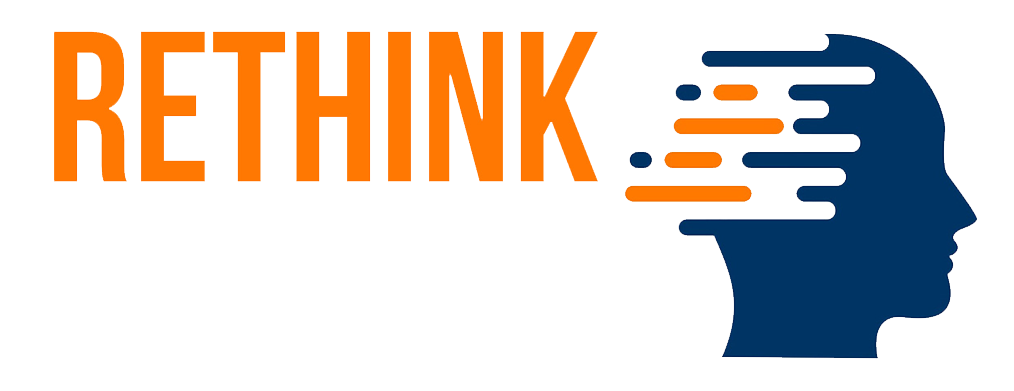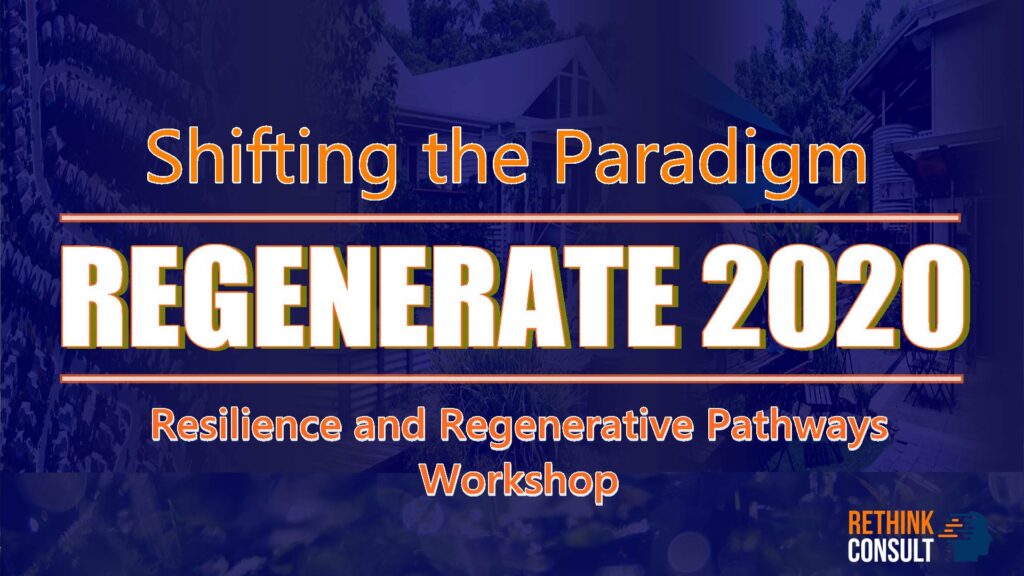
The Benefits of Building Resilience for Organisations and Communities
Article by: Andrew Martin author of, Rethink... Your World, Your Future and Director of Rethink Consult
Resilience has become a buzzword, with civic organisations, think tanks, community groups, corporations and local business addressing potential risks. A system is said to be resilient if it has the capacity to defend against, adapt to and repair itself after disturbances. The converging crises (environmental/climate), social and financial are inextricably linked. There are numerous challenges we face on a societal and planetary level today. Energy, economy and environment are all highly correlated, yet as a society we fail to understand how these are inextricably linked.
Many people associate resilience with personal well-being and mindfulness. While these are important, we focus on the four drivers of change that are, and will, increasingly impact businesses and communities as well as local and regional government authorities over the coming decades. These include:
2. Declining Net Energy (Resource Constraints)
3. Environmental Challenges
While there is much debate and conflicting views around the severity of the impacts of a changing climate, it is certain the global climate system is changing. We are already seeing the consequences of prolonged droughts, unprecedented wildfires and extreme weather events playing out almost on a weekly basis somewhere across the globe. The end of 2019 wrapped up the hottest decade ever recorded. The last five years have been the warmest years on record. This increasing upward temperature trend combined with catastrophic weather events has seen insurance companies battening down the hatches. ClimateWise, a coalition of 29 of the world's largest insurers, commissioned a report into the impacts of climate change on the insurance industry. This global collaboration of leading insurers focused on reducing the risks of climate change found that more frequent extreme weather events are driving up uninsured losses and making some assets uninsurable. The report said that, since the 1950s, the frequency of weather-related catastrophes has increased by more than 600%. The report concluded that the industry must use more of its $30 trillion of investments to help fund increased resilience of society to floods, storms and heatwaves.
 The chairman of Lloyd’s of London has said that climate change is the “number one issue for that massive insurance group.” Europe’s largest insurer, Allianz, stated that climate change stands to increase insured losses from extreme events in an average year by 37 per cent within just a decade. Paul Fisher, former deputy head of the Bank of England, also articulated, “climate change is potentially a systemic risk" which "could be the trigger for the next financial crisis."
The chairman of Lloyd’s of London has said that climate change is the “number one issue for that massive insurance group.” Europe’s largest insurer, Allianz, stated that climate change stands to increase insured losses from extreme events in an average year by 37 per cent within just a decade. Paul Fisher, former deputy head of the Bank of England, also articulated, “climate change is potentially a systemic risk" which "could be the trigger for the next financial crisis."
The converging crisis, ecological, energetic, economic and social, are inextricably linked. Unfortunately our inability to see the complexity and interconnectedness of these may go unnoticed. It is wise to be proactive, as opposed to being forced to take emergency action. While it is easy to be optimistic or ignore the real issues, there is great power, freedom and benefit to being able to identify, plan and take positive action before any crisis occurs. Those individuals, organisations and communities that plan for and build strategy around resilience will be far better placed to move forward and reap significant benefits.
10 BENEFITS OF BUILDING ORGANISATIONAL AND COMMUNITY RESILIENCE
 1. Improved Organisational Culture
1. Improved Organisational Culture
Resilience starts within the organisation. Through awareness comes better staff engagement, improved visioning, higher motivation and morale, as well as, greater focus and direction for developing culture. It is only by understanding and recognising the challenges ahead can move to a place of action and engagement. A resilient mindset is not only important for understanding the challenges ahead, it helps build better communication across teams and employees.
 2. Robust and Resilient Financial Structures
2. Robust and Resilient Financial Structures
By establishing a baseline from which to envision the future, it is possible to re position assets and financial instruments before any significant headwinds take effect. Strategic capital allocation is crucial in being able to manage potential risk and vulnerabilities. By managing resources and capital accordingly, organisations and communities can allocate key resources and financial instruments to weather and thrive in the face of adversity. Through collaborative design, innovation and implementation, synergies in service delivery and infrastructure can be managed appropriately, helping ensure return on investment is maintained or maximised.
 3. Increased Diversity
3. Increased Diversity
Diversity fosters resilience and empowers people to make positive change. Diversity offers opportunity for greater innovation and adaptive capacity while reducing risks and strengthening community ties. A resilient community brings varied backgrounds and interests together. This mix of cultures, ideas, and perspectives helps solve problems and creates a platform for creating economically, environmentally and culturally diverse interactions and outcomes.
 4. Positioning for Changes and Shocks
4. Positioning for Changes and Shocks
It is far easier and less stressful to pre-empt potential disasters than to wait for crisis to occur. Once a crisis occurs it becomes more difficult to coordinate people and resources. It can be overwhelming to make sense of dramatic changes and shifts when access to resources, knowledge and infrastructure are limited. It is better to have strategic preparedness plan than to be caught off guard.
 5. Enhanced Social Capital
5. Enhanced Social Capital
The power to envision the future as a collective by addressing challenges head on, leads to a greater level of resilience within communities. Only by taking responsibility for our own future can we respond in an empowered and intelligent way. Building networks and social structures helps improve social capital. This social capital is built by developing cooperation, reciprocity and trust among members of the community.
 6. Creative Innovation
6. Creative Innovation
Shifting the paradigm and changing the story breeds innovation and diversity. When we accept the status quo we resign to mediocrity. However, when we are engaged and start questioning the current systems and models we start to explore new opportunities. By questioning the capacity of current systems and understanding their vulnerabilities we establish new opportunities and innovations to drive future long-term strategy. Through learning, exploration and development of new and innovative ways of doing things resilience can be fostered and developed.
 7. Synergies and Solutions
7. Synergies and Solutions
By examining the relationships and connections between the components that comprise a system, we can establish a broader understanding of what makes a system complete. By identifying dynamics of how variables interact with other components of the system we can develop synergies and solutions that suit organisations and/or regions. Taking a holistic perspective enables us to make socially, environmentally and economically rigorous decisions over the short, medium and long term.
 8. More Efficient Allocation of Resources
8. More Efficient Allocation of Resources
Building resilience helps reduce redundancy. By anticipating existential threats and potential risks we can identify potential opportunities. This enables us the time and space to redeploy resources and allocate capital, time and effort into appropriate projects and investments. Underutilised resources and assets can be reconfigured to maximise efficiency while inefficient and stranded assets can be either decommissioned or sold to reduce cost pressures.
 9. Better Environmental Outcomes
9. Better Environmental Outcomes
Our economy and way of life is a sub-set of the natural world. Our communities are completely reliant on the surrounding environment for their continued survival. It is far better to understand our connection, reliance and dependence upon the natural world than to disregard the warning signals nature gives when stressed. A resilient mindset and community manages ‘externalities’ and accounts for potential impacts which may affect ecosystems. Building resilient communities helps foster and deliver healthy environmental outcomes by working with, and integrating with natural systems. Increased biodiversity, better use of water, regenerative farming practices, and reduced erosion and carbon emissions help build ecosystems which thrive.
 10. Increased Community Engagement
10. Increased Community Engagement
Building resilience helps foster increased community engagement. Converging economic, environmental and social challenges are increasingly evident today. By engaging a cross section of community we can develop valuable links, networks and synergies. These networks will ultimately build a robust framework for handling shocks, disasters and potential challenges. The knowledge base of every community is diverse; hence it is crucial for these relationships to be developed and nurtured. It is only when community members take ownership and responsibility for their future can real change and progress be made.
Want to position your business, community or organisation as a leader and build resilient and regenerative pathways?
IF THE ANSWER IS YES - THEN CHECK OUT OUR 'SHIFTING THE PARADIGM' - REGENERATE 2020 WORKSHOP TO LEARN MORE

